Go的interface源码在Golang源码的runtime目录中。
Go在不同版本之间的interface结构可能会有所不同,但是,整体的结构是不会改变的,此文章用的Go版本是1.11。
Go的interface是由两种类型来实现的:iface和eface。
其中,iface表示的是包含方法的interface,例如:
type Person interface {
Print()
}
而eface代表的是不包含方法的interface,即
type Person interface {}
或者
var person interface{} = xxxx实体
eface
eface的具体结构是:

一共有两个属性构成,一个是类型信息_type,一个是数据信息。
其中,_type可以认为是Go语言中所有类型的公共描述,Go语言中几乎所有的数据结构都可以抽象成_type,是所有类型的表现,可以说是万能类型,
data是指向具体数据的指针。
type的具体代码为:
type _type struct {
size uintptr
ptrdata uintptr // size of memory prefix holding all pointers
hash uint32
tflag tflag
align uint8
fieldalign uint8
kind uint8
alg *typeAlg
// gcdata stores the GC type data for the garbage collector.
// If the KindGCProg bit is set in kind, gcdata is a GC program.
// Otherwise it is a ptrmask bitmap. See mbitmap.go for details.
gcdata * byte
str nameOff
ptrToThis typeOff
}
eface的整体结构是:
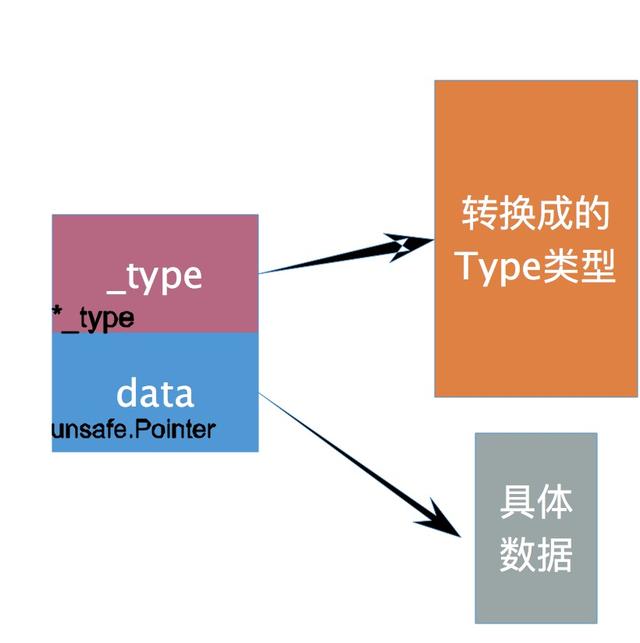
对于没有方法的interface赋值后的内部结构是怎样的呢?
可以先看段代码:
import ( "fmt" "strconv" ) type Binary uint64 func main() { b := Binary(200) any := (interface{})(b) fmt.Println(any) }
输出200,赋值后的结构图是这样的:
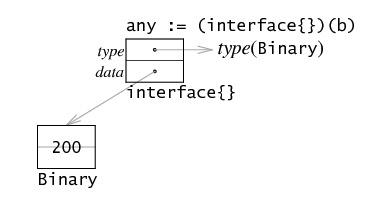
对于将不同类型转化成type万能结构的方法,是运行时的convT2E方法,在runtime包中。
以上,是对于没有方法的接口说明。
对于包含方法的函数,用到的是另外的一种结构,叫iface
iface
所有包含方法的接口,都会使用iface结构。包含方法的接口就是一下这种最常见,最普通的接口:
type Person interface {
Print()
}
iface的源代码是:
type iface struct {
tab *itab
data unsafe.Pointer
}
iface的具体结构是:
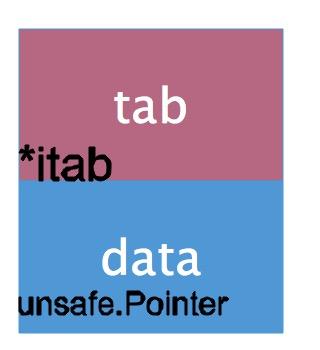
itab是iface不同于eface比较关键的数据结构。其可包含两部分:一部分是确定唯一的包含方法的interface的具体结构类型,一部分是指向具体方法集的指针。
具体结构为:
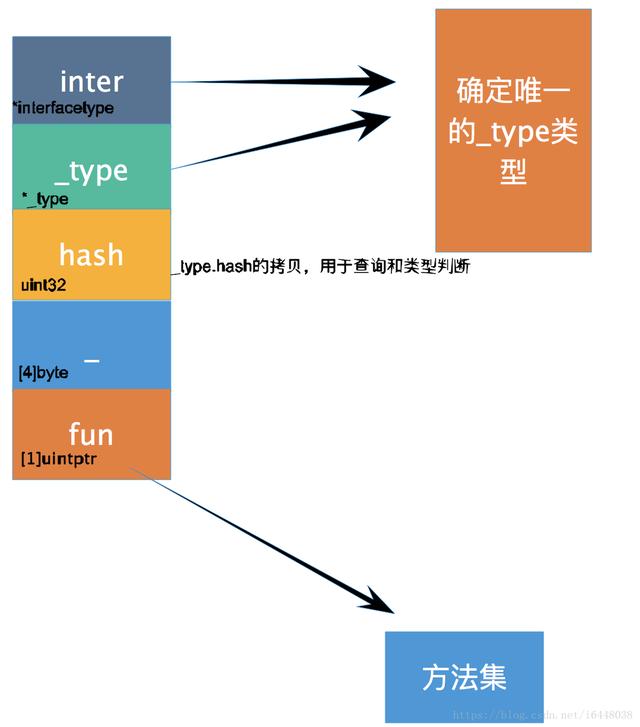
属性 itab的源代码是:
type itab struct {
inter *interfacetype //此属性用于定位到具体interface
_type *_type //此属性用于定位到具体interface
hash uint32 // copy of _type.hash. Used for type switches.
_ [4]byte
fun [1]uintptr // variable sized. fun[0]==0 means _type does not implement inter.
}
属性interfacetype类似于_type,其作用就是interface的公共描述,类似的还有maptype、arraytype、chantype…其都是各个结构的公共描述,可以理解为一种外在的表现信息。interfacetype源码如下:
type interfacetype struct {
typ _type
pkgpath name
mhdr []imethod
}
type imethod struct {
name nameOff
ityp typeOff
}
iface的整体结构为:
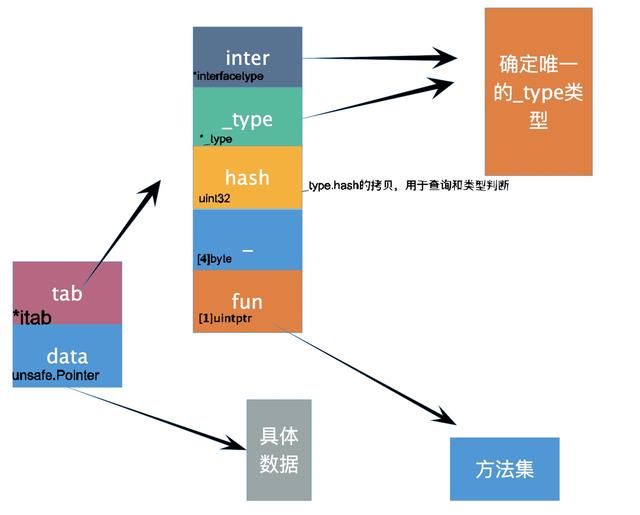
对于含有方法的interface赋值后的内部结构是怎样的呢?
一下代码运行后
package main
import (
"fmt"
"strconv"
)
type Binary uint64
func (i Binary) String() string {
return strconv.FormatUint(i.Get(), 10)
}
func (i Binary) Get() uint64 {
return uint64(i)
}
func main() {
b := Binary(200)
any := fmt.Stringer(b)
fmt.Println(any)
}
首先,要知道代码运行结果为:200。
其次,了解到fmt.Stringer是一个包含String方法的接口。
type Stringer interface {
String() string
}
最后,赋值后接口Stringer的内部结构为:

对于将不同类型转化成itable中type(Binary)的方法,是运行时的convT2I方法,在runtime包中。


